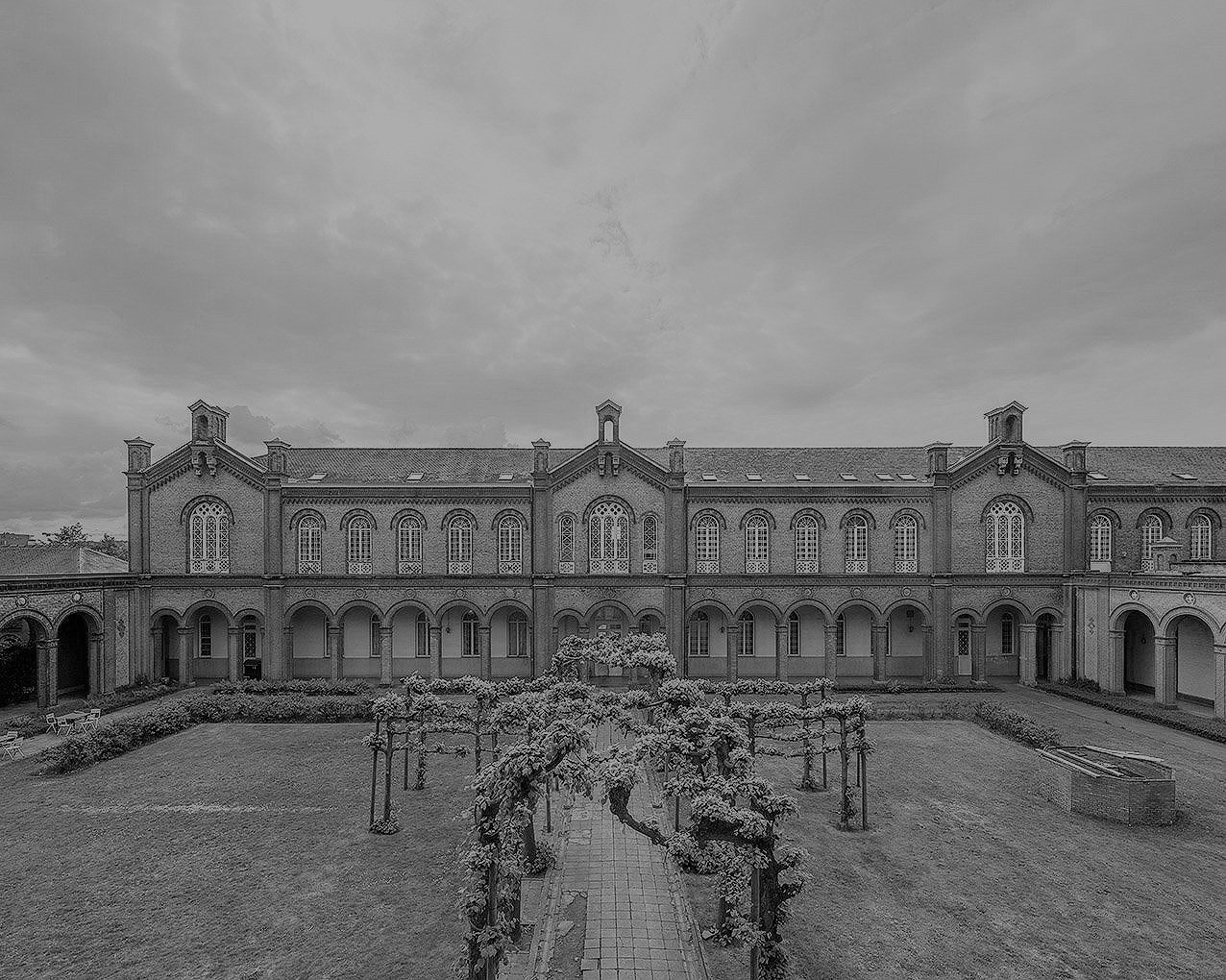
Photo: Karin Borghouts
The building
The old Guislain Asylum:
our most important exhibit
The impressive building complex, which currently houses the Museum Dr. Guislain, the Dr. Guislain Psychiatric Centre, and the Dr. Guislain Training Centre, was completed in 1857 as the Hospice pour hommes aliénés. Its realisation gave Ghent international renown. The institution was praised for being a huge step forward in the humane treatment of the mentally ill, and was often called ‘The Guislain Asylum’. Obviously, the history of the site runs parallel with the history of psychiatry as a medical and social phenomenon.
The founder of the insane asylum, Professor Joseph Guislain (1797 – 1860), was among the forerunners of modern psychiatry. He was one of the first in Belgium to approach insanity as a disease that could be treated. Guislain insisted that the new asylum met certain requirements. As far as Guislain was concerned, he wanted the architecture to be an exteriorisation of his views on the treatment of mental patients.
Collection Museum Dr. Guislain
The importance that Guislain attached to the rooms in which patients had to live was in line with his moral therapy, He believed that internment in an institution was an important therapeutic factor. The new building, which was designed in collaboration with city architect Adolphe Pauli, had to be erected outside the city gates, in a quiet environment. The original plans illustrate the harmonious interaction between the architect and the doctor. The building complex is erected in what one might call an eclectic style. It is a mixture of neo-roman, neo-gothic, and neo-renaissance elements. The window frames are made of iron, and so are the parapets, which have both a decorative and a functional purpose. It was, indeed, the first real insane asylum in Belgium and was considered as a model institution. Guislain became the first director of the asylum which was inaugurated in 1857.
The old psychiatric institution is not only valuable from an architectural point of view but it also bears witness to a chapter in the history of madness. Hence the Flemish Government’s decision in 1999 to recognise the whole complex as a monument.
Collection Museum Dr. Guislain



